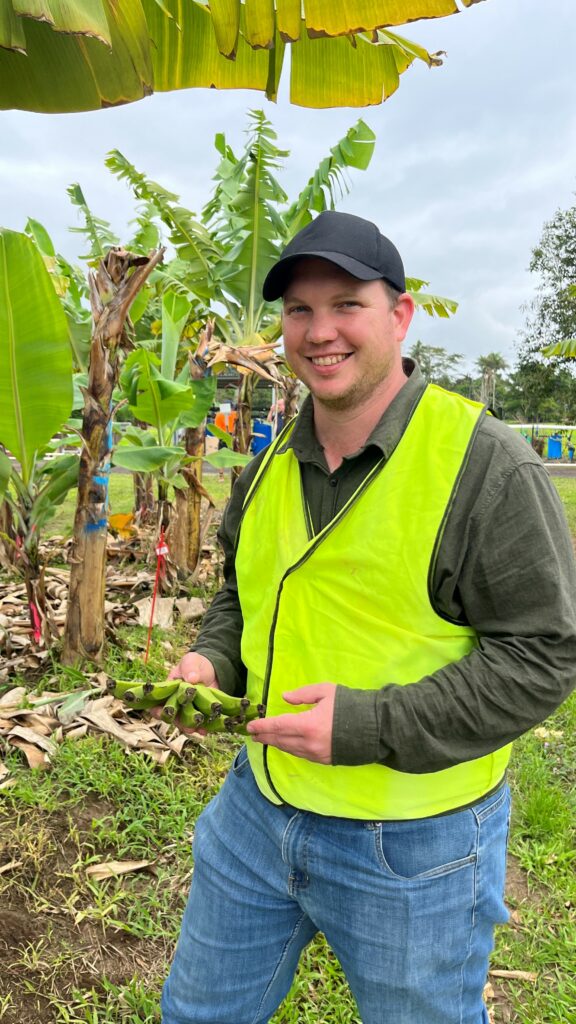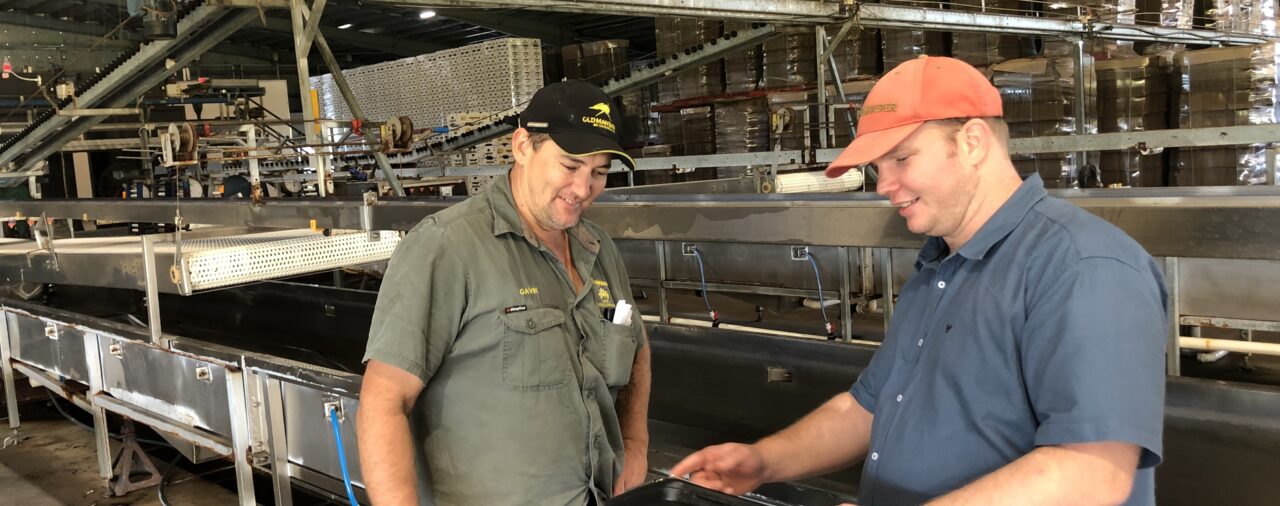
For Caleb Connolly, working as an agricultural economist is about more than just numbers — it’s about supporting farmers to build resilient, profitable, and sustainable businesses.
As part of the Department of Primary Industries (DPI), he’s helping banana growers in North Queensland make more informed decisions through contributions to the Banana Nutrient Rate Trials, a project delivered by DPI and funded through the Queensland Government’s Queensland Reef Water Quality Program.
Caleb reflects on how his career has been shaped by a commitment to supporting regional communities in meaningful ways. “Almost a decade of my childhood was spent growing up in Innisfail,” Caleb says. “After completing a business and law degree, I landed a job at a law firm where robust research was valued. This experience inspired me to complete extra study on trade agreements and Australia’s agricultural trade. My work as an economist now involves research projects across Queensland and supporting farmers to weigh up the specific costs and benefits of farming options and new AgTech.”
“I feel privileged to meet farmers from all walks of life,” Caleb reflects. “It’s not just about the numbers – it’s about the people behind those numbers.”
Integrating agronomy and economics
The Banana Nutrient Rate Trials project aims to identify nutrient management practices that achieve positive financial and water quality outcomes, to support farm profitability and contribute to the environmental health of the Great Barrier Reef. At the heart of the project is a focus on understanding production outcomes and the environmental footprint of various nutrient management strategies, particularly nitrogen application rates. DPI horticultural research staff Alex Lindsay, Catherine Chung, Andrés Morera and Kate SimovaSamuelian gather information on crop growth and yield of bananas grown with different rates of applied fertiliser across multiple sites. Caleb’s role is to analyse the trial data through an economic lens and assess the profitability of different nutrient practices.
“We’re working closely with DPI horticulturists and local banana farmers to understand how different nitrogen application rates affect farm income,” Caleb explains.
“We want the best information to be available so that farmers can make more informed decisions and build lasting legacies for their families and their communities.”
Multi-year project
Caleb has undertaken economic analyses of the plant and ratoon crops of one of the key project trial sites, and provided the preliminary results to the Project Reference Group and engaged agronomists. This process has included sensitivity analysis of various parameters. The next step is to finish integrating the data from multiple years and report the returns of the different fertiliser rates on an annual basis. Caleb is looking forward to working with the horticultural team to communicate project findings to the wider industry in 2025.

